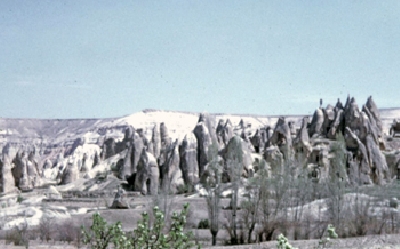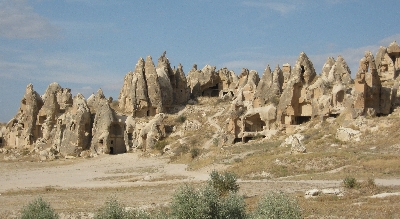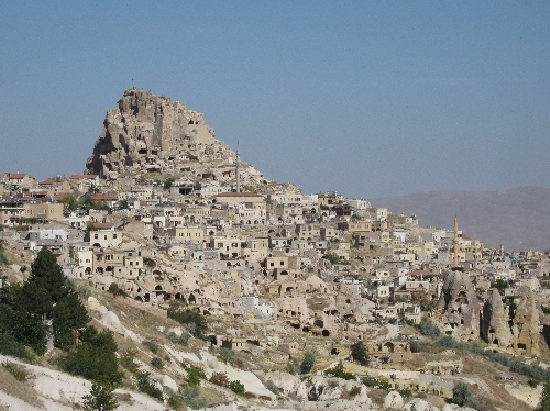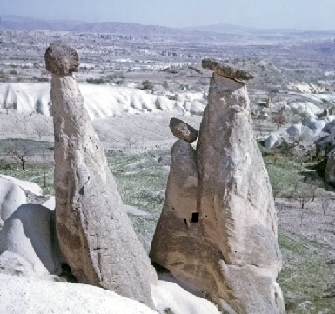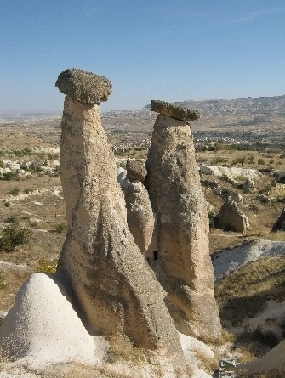
Because of the soft nature of much of the rock that covers Cappadocia, not only are there Underground Churches but also several complete Underground Cities. One of the most interesting and best preserved is at Derinkuyu in the south-west of Cappadocia, located between the cities of Nevsehir and Nigde.
The early part of the Underground City at Derinkuyu pre-dates the Christian era, parts of it belonging to the 8th and 7th centuries BC. It was used by Christians seeking to hide from Roman persecution during the first three centuries AD and then extended and used once more between the 5th and 10th centuries AD during the middle Byzantine period. Christians hid in this and other Underground Cities like it, to escape attacks from Arab Islamists which occurred from the 7th century AD onwards.
 |
 |
The Underground City at Derinkuyu has 11 different levels and descends to a depth of c85 metres. Within it there are rooms for food storage, kitchens, churches, stables, wine or oil presses, and shafts for ventilation. These ventilation shafts go down to the aquifer and also served as wells to provide fresh water. Large circular stones similar to millstones, could be rolled across each entrance, to prevent unwanted visitors. Such is the size of the complex, it was possible for many thousands of people to live underground within it for several months at a time.
Although first opened to the public in 1969, it is still only possible to visit 10% of the total complex. Those parts open to the public are reasonably well lit but in numerous places there is a very serious lack of headroom! It is certainly not a place to visit if you suffer in any way from claustrophobia!
The Underground City at Derinkuyu is another place I had visited during my 1975 trip and which I revisited with Sybille on Friday 16th October 2009. During my recent visit, I was very much struck as to how nothing had really changed from how I remembered it looking on my previous visit. Inevitably, it is not that easy to photograph though I hope these accompanying images will help to give some picture of this amazing construction.
Just for Karen, who seems to be the only person regularly commenting on my blog at present, (even though I know many others read it but don’t comment), here is a picture of me sitting within the Underground City complex at Derinkuyu, taken during my 1975 visit, showing me with vastly more hair and dressed to look like a good Australian (which I’m not!), in my shorts and long white socks!
















